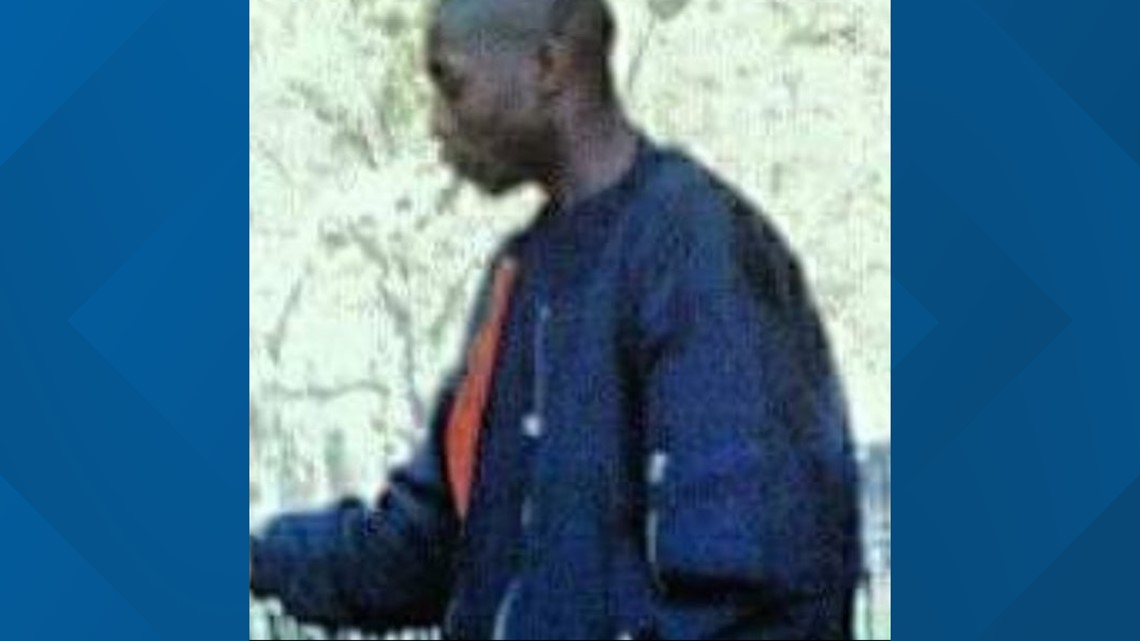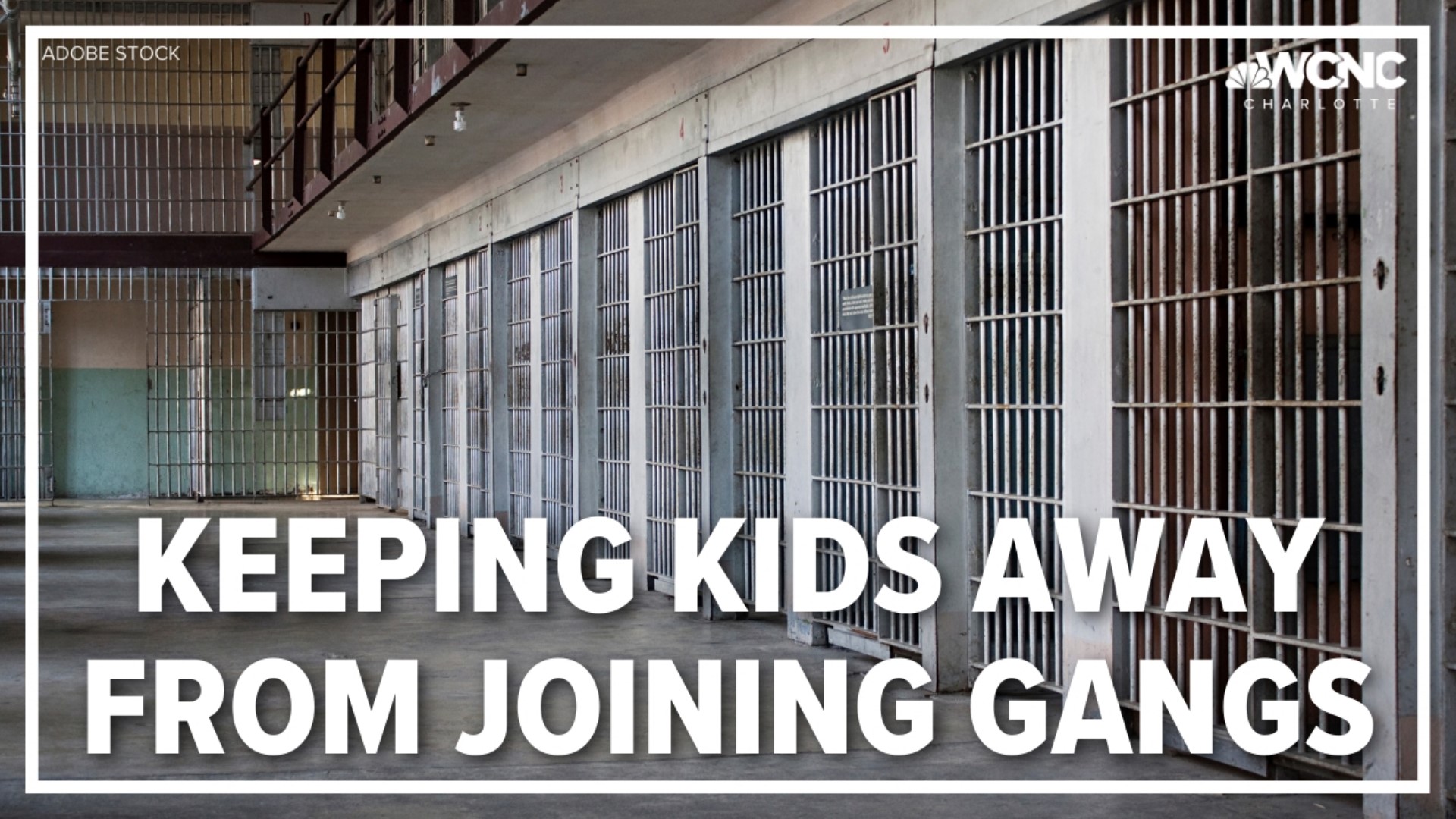CHARLOTTE, N.C. — "It's all a facade."
That's the message James Young, Jr. tries to share with kids feeling the pull of a gang. It's the revelation he said he had as a teen, sitting in a prison cell on Rikers Island after getting busted for transporting drugs across state lines on behalf of a gang.
"I get caught taking drugs out of town to Maryland, and boom," Young said. "Here you go. Five years, for every state you passed. Now, you're facing 20 years in prison."
Young said he ended up serving more than 13 years of the sentence, studying social work, political science, and mental health while behind bars. When he got out, he said he had a purpose.
"My true purpose is healing -- healing young guys just like me, young girls, just like me, [who] came from the area I came from, Black and brown kids that's going through traumatic experiences without the help of family members or friends," Young said.
It's now been more than three decades, and the founder and executive director of youth mentoring program All Hearts Heal Imprisoned Minds (AHHIM) tells his story to young people needing direction in four states: New York, New Jersey, Maryland and South Carolina.
He's now considering a new operation in North Carolina, where he said old friends have been asking him to get involved with Charlotte's youth violence problem.
"We've got to support them," Young said. We've got to show them how to get out of that dark hole and bring them back to the light."
Youth Violence in the Queen City
Youth violence in the Queen City is a problem. Police have said it. Community members have said it.
According to the Charlotte-Mecklenburg Police Department's latest quarterly crime report, released in October, homicides are up 26% from the year before and assaults with a firearm are up more than 25% over a five-year average.
In its mid-year crime report this year, CMPD said more and more young people are doing the shooting, some as young as 13.
While police did not explicitly address gang-involvement in its reports, Caroline Caldwell, a former U.S. corrections officer and current offender reentry specialist, said it's hard to separate the gang element from the youth violence problem.
"A lot of it boils down to gang involvement when you see youth involved in violence," Caldwell said.
Caldwell runs South Carolina-based New Mind Health and Care, an organization focused on helping offenders with second chances through mental health and other support services. She also runs a gang reduction program targeting young people.
"There are only a few reasons that people join a gang," Caldwell said. "One is connection. The other is the gang promises you economic viability."
WCNC Charlotte is always asking "where's the money?" If you need help, reach out to WCNC Charlotte by emailing money@wcnc.com.
Caldwell said, in most cases, kids aren't the ones recruiting other kids for gang activity. There is usually an adult behind the process, calling the shots and orchestrating the "beef" with other people or groups.
"Once they're in, it's very hard to turn them against that system," Caldwell said, noting that's where her program's 'credible messengers' come into play. "They're prior gang members... who've gone to prison, who understood that it's all a lie and understand the effect that it has on the youth, and they speak the language."
The credible messengers, Caldwell said, can then share their own journeys of getting out of the gang.
"They walk them through the process of opening your mind up to other opportunities," Caldwell said.
A credible messenger
Young said he had big dreams of helping his community before being drawn into the Bloods gang as a young teen.
"I lost my best friend to gun violence," Young said.
Cancer Fowler was 13-years-old when he died, Young said.
"This was a guy I used to sit on the bench and talk about what we wanted to do, once we get older, for the community," Young said. "This wasn't even an initiation. It was just a crew gang, a crew group inside a neighborhood... He got killed, shot with a sawed-off shotgun in his chest."


After his friend's death, Young said he went into a downward spiral and he did get the support from family to cope.
"My grades started going down... I stopped playing basketball, you know, a lot of other things," Young said. "The one person that I thought would come to my aid or support me, wasn't the one that did it. It was drug dealers and gang members."
While Young said it was false support, the lure he felt was still strong.
"I started adapting to it: the clothes, the girls... the selling drugs, the money and going out to the nightlife, things of this nature, seeing money that I've never seen before in my life," Young said.
At 15-years-old, Young said, he was facing prison time for transporting drugs, wondering why adults orchestrating the operation were not in the same boat.
"It's all a facade when you see something that's really not your dream, it's somebody else's," Young said. "These are not the images that you thought of when you was younger. This is somebody else's image that was placed on... you."
Young said that revelation and a traumatizing stint in solitary confinement prompted his turning point.
"While I was in there, I took the time to transform me, to find me, find out what was my issue, not the issues of others, but myself," Young said.
Through AHHIM, Young shares his story, shares behavioral and mental health lessons he's learned through his education, and redirecting activities, like neighborhood beautification projects offering stipends, to fill voids and guidance gang involvement might try to fill instead.
He's also a proponent of getting parents involved, sometimes knocking on doors and meeting face-to-face with them to start the conversation.
"Teaching them how to have a dialogue with one another -- that's what's missing" Young said. "Because sometimes your moms don't even know how to be a parent. She might have had you at a young age."
The community must play a larger role in helping, too, he said.
"A lot of our young adults have been traumatized -- they've been traumatized by something in a household that's been toxic, something in a community that's been toxic," Young said. "Most of us say, look, it's not my business. I'm walking away. I don't care. Right? No. That's the first thing that you did wrong. Sometimes when you address an issue with a kid, now they noticed that you see them."
Young said others, particularly adults who came from neighborhoods with some of these violence problems and have gone on to become productive in the community, can get involved by offering a good example to young people.
"Bring these types of people in front of these kids and tell them: Look, he lived here," Young said. "He came from here. This is what they're doing. It's not far-fetched... If you could change one or you can hit one, you could change hundreds. You could hit thousands. You could hit millions. It always starts with one."
Contact Vanessa Ruffes at vruffes@wcnc.com and follow her on Facebook, Twitter and Instagram.
WCNC Charlotte is committed to reporting on the issues facing the communities we serve. We tell the stories of people working to solve persistent social problems. We examine how problems can be solved or addressed to improve the quality of life and make a positive difference. WCNC Charlotte is seeking solutions for you. Send your tips or questions to newstips@wcnc.com.

